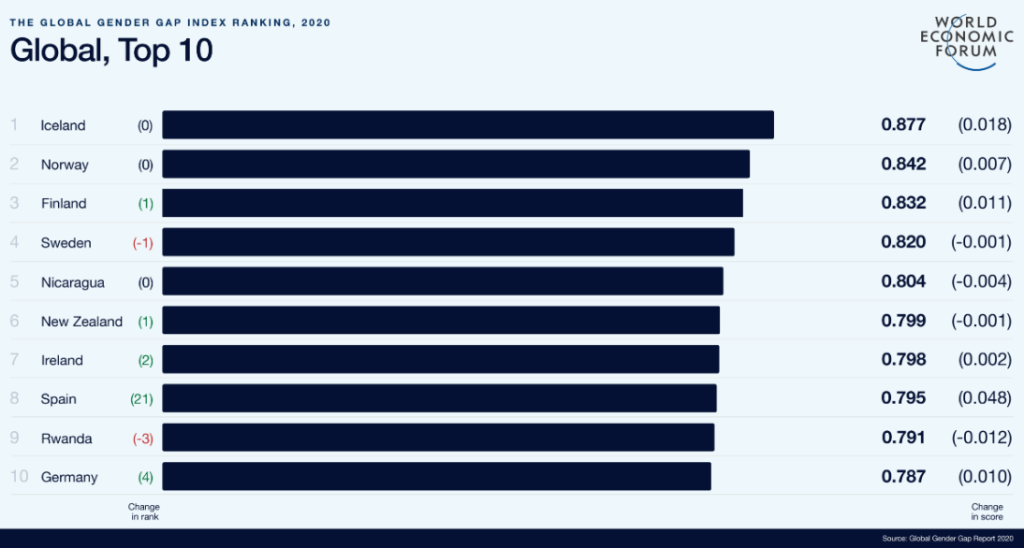It will take 99.5 years to close the global gender gap, according to new survey

Image courtesy: World Economic Forum
It will take 99.5 years to close the gender gap in health, education, work, and political sectors, according to a new Global Gender Gap Report by the World Economic Forum.
The assessment is nearly a decade better than 2018’s estimate, which calculated it would take 108 years to reach global parity.
The improved outlook is attributed to an increase in women in politics.
“Gender parity has a fundamental bearing on whether or not economies and societies thrive,” reads an excerpt.
“Developing and deploying one-half of the world’s available talent has a huge bearing on the growth, competitiveness, and future-readiness of economies and businesses worldwide.”
The report identifies one of the largest gaps in the engineering and tech sectors — particularly in cloud computing jobs, where women only make up about 12 per cent of the profession. Across engineering fields, women make up about 15 per cent of all professionals.
The survey, which is currently in its 14th year, examines more than 140 countries on their progress towards gender parity with a focus on four categories:
The 2020 edition of the report also looks at “gender gap prospects” in future professions.
While women are close to reaching parity in the “education attainment” and “health and survival” pillars (receiving scores of 96.1 per cent and 95.7 per cent respectively) data shows a regression in “economic participation and opportunity”:
“Here, the figures are sobering, with a deteriorating situation forcing gender parity to a lowly 57.8 per cent, which in time represents a massive 257 years before gender parity can be achieved,” reads the report.
This can be attributed to three factors: women have greater representation in roles that are being automated, they struggle to access “care infrastructure”, and not enough women are entering the tech sector or other fields where wage growth is the highest.
Societal pressures continue to hold women back as well. According to the report, women spend twice as much time in caregiving and voluntary roles than men, leaving less time for career development and skills training.

Iceland remains the top country for gender parity — a distinction the country has held for 11 years.
Albania, Ethiopia, Mali, Mexico, and Spain are cited as the “most improved” countries. Of the 149 countries ranked, 101 improved their scores over the 2019 report.
“A total of 35 countries have achieved gender parity in education,” reads the report.
“In healthcare, 48 countries have achieved near-parity and 71 have closed at least 97 per cent of the gap.”
